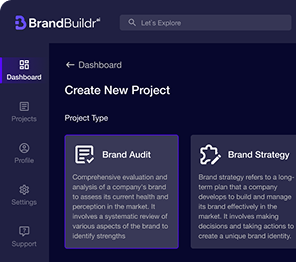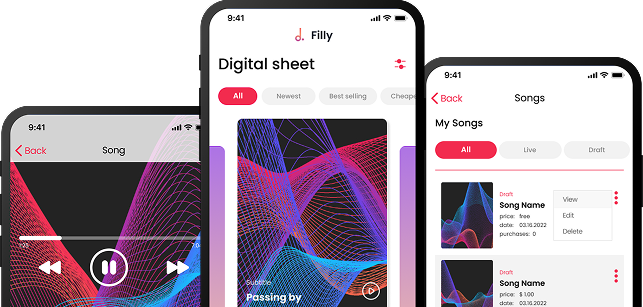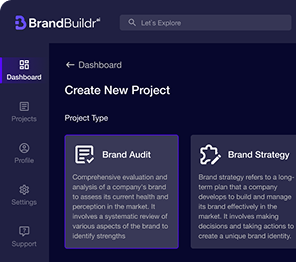Starting a new software project is always an exciting venture, but it can also be a huge leap of faith. With so much time, effort, and money on the line, how do you know if your idea will actually work in the real world? That’s where a Proof of Concept (PoC) comes in. Think of it as a trial run for your idea – a way to test whether it’s technically possible before diving into full-scale development. A PoC helps developers, business stakeholders, and investors see if the concept holds water, without putting too many resources at risk upfront. A staggering 90% of AI PoCs fail to reach production, according to Forbes. Unclear objectives, insufficient data readiness, and a lack of in-house expertise are sinking many AI proofs of concept.
In this article, we’ll explore why a PoC is so crucial in the software development process, how to create one, and the many ways it can help your project succeed down the line.
%20(1).png)
Defining PoC and Its Role in the Software Development Process
A Proof of Concept (PoC) is an initial prototype or demo of a software product or system that demonstrates whether an idea is technically feasible.
It's not intended to be a fully functional product but rather a simplified version that validates specific functionalities or features that are core to the project.
In software development, the PoC serves as a crucial tool for proving that the proposed technology can achieve the intended goals.
The PoC plays a pivotal role in assessing the viability of an idea early in the development process. By focusing on key features and requirements, it allows teams to uncover potential challenges and refine the concept before committing to the more resource-intensive stages of development.
The Purpose of Proof of Concept in Software Projects
The primary purpose of developing a PoC is to validate whether an idea is technically possible and if the technology stack chosen will support the project goals. It helps developers and stakeholders determine whether the proposed software solution can address the problem it’s aiming to solve. In addition to testing feasibility, PoC enables you to:
- Mitigate risks by identifying potential obstacles early in the process.
- Refine product scope based on real-world testing and feedback.
- Enhance decision-making for stakeholders, ensuring resources are invested wisely.
PoC vs. Prototype vs. MVP: Understanding the Differences
While PoC, prototypes, and Minimum Viable Products (MVPs) might seem similar, they each have distinct purposes:
- Proof of Concept (PoC): Validates the feasibility of a specific idea or technology, typically focused on core features.
- Prototype: A preliminary model that demonstrates the look and feel of the software, focusing more on design and user experience.
- Minimum Viable Product (MVP): A fully functional version of the software with the smallest set of features necessary to meet user needs and test market potential.
Understanding these differences helps ensure that the right approach is taken at each stage of the software development process.
Benefits of Creating a Proof of Concept for Software Development
Developing a Proof of Concept offers numerous advantages, especially when it comes to reducing the risks associated with software development.
Minimizing Financial Risk and Reducing Uncertainty
One of the greatest benefits of creating a PoC is that it helps to reduce financial risks. By testing the feasibility of an idea early on, businesses can avoid pouring significant resources into a project that may not work. PoC serves as a low-cost method to evaluate potential technical challenges, helping teams identify and mitigate risks before diving into full-scale development.
Without a PoC, software development can proceed on assumptions that may not hold true once actual coding begins. As a result, businesses might find themselves wasting time and money on features or designs that do not align with user needs or technical capabilities.

Attracting Stakeholders and Investors with a PoC
Another significant advantage of a PoC is its ability to attract investors and stakeholders. A tangible demonstration of the software’s potential can generate enthusiasm and interest. By validating the technical feasibility of your idea, PoC helps secure buy-in from potential investors, as they are more likely to fund a project that has a clear path to success.
Furthermore, PoC also acts as a risk-reduction tool for investors, as it proves that the development team can overcome the technical challenges associated with the product. This gives investors more confidence that the project has the potential to succeed.
Steps to Develop a Successful Proof of Concept for Software
Developing a successful PoC for software requires careful planning and execution. Here are the key steps to follow:
Defining Clear Objectives for Your PoC
The first step in creating a PoC is to clearly define its objectives. Ask yourself what specific problem the PoC will solve and which technology or approach will be tested. The clearer the objectives, the easier it will be to design a focused and effective PoC. Objectives should be measurable and directly tied to key questions about the feasibility of the software idea.
Key objectives might include:
%20(1).png)
- Testing specific functionality or features.
- Evaluating the software’s ability to integrate with existing systems.
- Proving technical feasibility using a particular technology stack.

Testing and Validating Your Software Idea with PoC
Once the objectives are set, the next step is to develop the PoC. This version should focus on demonstrating the core functionality and technical feasibility of the software idea. PoC testing allows you to validate assumptions and obtain feedback from stakeholders, users, and other developers.
Testing can include:
- User acceptance testing (UAT): Ensure the software meets user expectations.
- Performance testing: Evaluate the software’s efficiency under load.
- Security testing: Identify vulnerabilities before full-scale development.
Once testing is complete, it's essential to analyze the results to determine whether the PoC has succeeded in demonstrating the desired technical capabilities.
Key Challenges in Developing a Proof of Concept for Software
While a PoC is an invaluable tool, developing one isn't without its challenges. Common pitfalls include scope creep, lack of alignment with business goals, and overcomplicating the PoC.
Avoiding Scope Creep in PoC Development
Scope creep refers to the gradual expansion of a project’s scope beyond its initial objectives. It is essential to avoid adding extra features or complexity that can derail the PoC's purpose. Since the goal is to test feasibility, your PoC should remain focused on core functionalities that directly answer critical questions about your software’s viability.
To avoid scope creep:
- Stick to the primary objectives.
- Prioritize testing the most critical features.
- Refrain from adding extra bells and whistles unless necessary for the core validation.
Ensuring Your PoC Aligns with Business Goals
Aligning the PoC with overall business goals is critical. A PoC should not only demonstrate technical feasibility but also be directly tied to solving a business problem. Make sure your PoC answers key questions such as:
- Does it address a market need?
- Will the technology meet the long-term goals of the business?
By aligning the PoC with your broader business strategy, you ensure that the project is on track to deliver meaningful value.
How to Leverage a Proof of Concept for Software Validation and Feedback
Once your PoC is developed, it’s time to gather feedback. This feedback will be essential in refining the product and deciding whether to move forward with full-scale development.
Gathering Stakeholder Feedback During PoC Testing
Stakeholder feedback is crucial during PoC testing. Key stakeholders, including project managers, investors, and team members, can provide valuable insights into the technical and business aspects of the software. Make sure to document their feedback and use it to make informed decisions about the next steps.
Using User Feedback to Improve Your Software Concept
User feedback plays a central role in improving your software concept. By involving real users in the testing phase, you can validate assumptions about user needs, functionality, and usability. User feedback can help highlight pain points, suggest improvements, and identify features that need refinement before the software goes into full-scale development.
When and Why You Should Invest in a Proof of Concept
Investing in a Proof of Concept is not always necessary for every software project, but there are certain scenarios where it is highly beneficial.
Is a Proof of Concept Always Necessary for Software Projects?
A PoC is especially important for projects that involve new or untested technologies, ideas, or market demands. If your software product is built on a novel concept, a PoC is a low-risk way to test assumptions and validate the technical feasibility of your idea. On the other hand, for well-established technologies and concepts, a PoC may not be required if the technical risks are already understood.
The Long-Term Value of Developing a PoC
Investing in a PoC can save both time and money in the long run. While developing a PoC requires initial investment, the potential benefits far outweigh the costs. By validating your idea early, you avoid the risk of investing heavily in a project that may fail later in the development process. Additionally, a PoC helps streamline the development process, as it provides clear insights into what works and what needs improvement.
Final Thoughts
A Proof of Concept is an essential tool for validating software ideas before full-scale investment. It helps to minimize risks, attract investors, and provide a clear roadmap for future development. By developing a PoC, software developers can gain crucial insights into the viability of their ideas, allowing them to make informed decisions and move forward with confidence.
At Codebridge, we specialize in building strategic Proof of Concept solutions that turn bold ideas into validated, investor-ready prototypes. Our team works closely with you to define key features, assess technical feasibility, and deliver a working PoC that sets the foundation for scalable, successful software products. Contact us today to validate your software vision or download our MVP Readiness Guide to get started. Take the first confident step toward full-scale development!
Heading 1
Heading 2
Heading 3
Heading 4
Heading 5
Heading 6
Lorem ipsum dolor sit amet, consectetur adipiscing elit, sed do eiusmod tempor incididunt ut labore et dolore magna aliqua. Ut enim ad minim veniam, quis nostrud exercitation ullamco laboris nisi ut aliquip ex ea commodo consequat. Duis aute irure dolor in reprehenderit in voluptate velit esse cillum dolore eu fugiat nulla pariatur.
Block quote
Ordered list
- Item 1
- Item 2
- Item 3
Unordered list
- Item A
- Item B
- Item C
Bold text
Emphasis
Superscript
Subscript




















.avif)

.avif)




.png)
